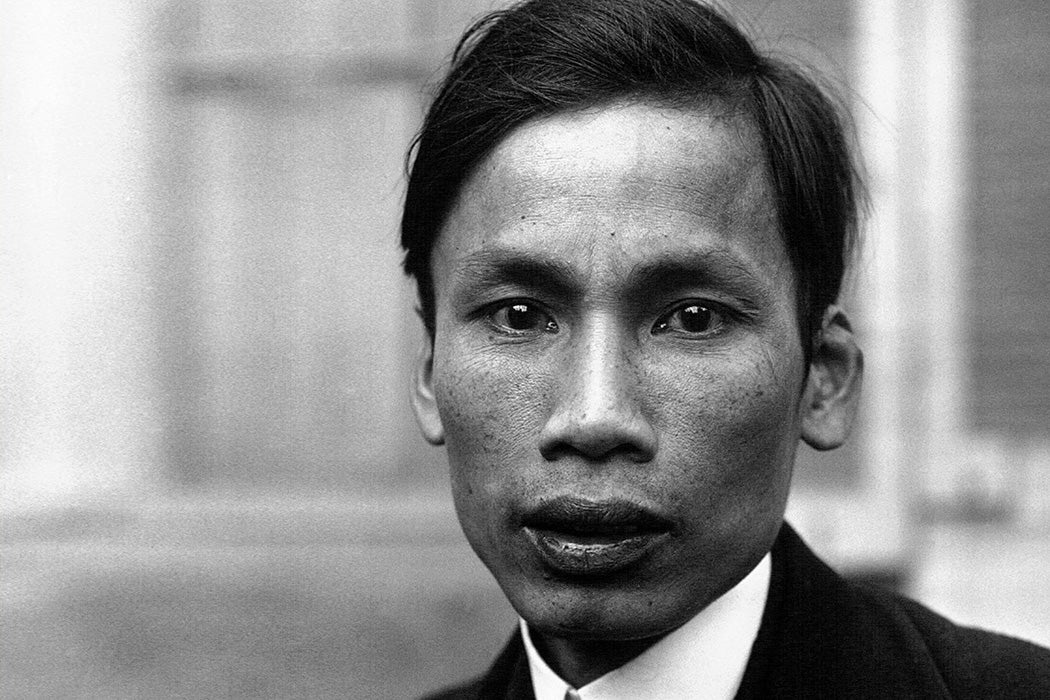After English and Spanish, the third-most-spoken language in Nebraska, Kansas, Texas, Arkansas, and Georgia is Vietnamese. Over 2 million people of Vietnamese descent live in the United States today. The generation that migrated here did so, by and large, after the end of the Vietnam War. There is, however, an older history of Vietnamese in America, people who came before 1945.
According to scholar Charles Keith, these earlier migrants “came from the most elite and the most marginal parts of Vietnamese society, and they left traces ranging from detailed travelogues to the barest administrative fragments.”
Keith writes that the “first documented presence of a Vietnamese in America” is in a 1912 letter from New York City. The author, Nguyễn Tất Thành, got to North America working in the kitchen of a French steamship. This letter is famous because that young cook’s helper is better known to history as Ho Chi Minh (1890–1969), the Vietnamese revolutionary who would go on to fight the Japanese, the French, and then the Americans and their allies.
The possible details of Ho’s life in America are hazy: he might have worked in Boston and Brooklyn, and he later said that he attended a rally by the famous Black nationalist Marcus Garvey. There is, however, no corroborating evidence to support these parts of his official biography. Keith writes that these later accounts, “inextricable from the charged politics and propaganda of the Vietnam War,” are “likely embellished or even fabricated as part of the communist efforts to cultivate political sympathy in the U.S.”
If so, then Ho and his image makers were probably incorporating the experiences of other Vietnamese in the U.S. into his story.
In the era Keith examines, ordinary Vietnamese worked “in steamships, hotels, restaurants, and factories.” French steamship lines connected Vietnamese to a global network of laborers. But this was precarious employment: they could be summarily dismissed anywhere, with no way of returning home. When racism ran high in the U.S., sometimes they weren’t even let off the boat. One shipworker wrote in 1930: “I just took a trip to America. I regret that when the boat arrived in New York, those with yellow skin were not allowed to disembark.”
Wealthier Vietnamese came as tourists. What Keith calls the “earliest detailed account of a Vietnamese journey to the US” is by Bùi Thanh Vân. At the age of sixty, having seen Paris twice, Bùi arrived in New Orleans in 1929. “Dressed in a European style,” including yellow boots, purple raincoat, and black umbrella, Bùi wrote, “I strolled, nose to the wind. I had not planned ahead; the sympathy of Whites and Blacks alike for a stranger guided my steps.”
Weekly Newsletter
Lê Văn Lương, “a rare Vietnamese graduate of an English university,” visited the U.S. on a world tour in 1941. Fascinated by surfing in Hawaii, and delighted by Southern California, he was less impressed further east. New York City was “the village of gangsters.”
Keith stresses that there were never many Vietnamese in the U.S. before 1945, though they could could turn up in unexpected places. Lê met two Vietnamese men who worked for MGM. One was a cameraman, the other a sound engineer. They had lived in Hollywood for years, wrote Lê, and had “an unusually fast way of walking, talking, and eating that was one hundred percent American.”
Support JSTOR Daily! Join our new membership program on Patreon today.







